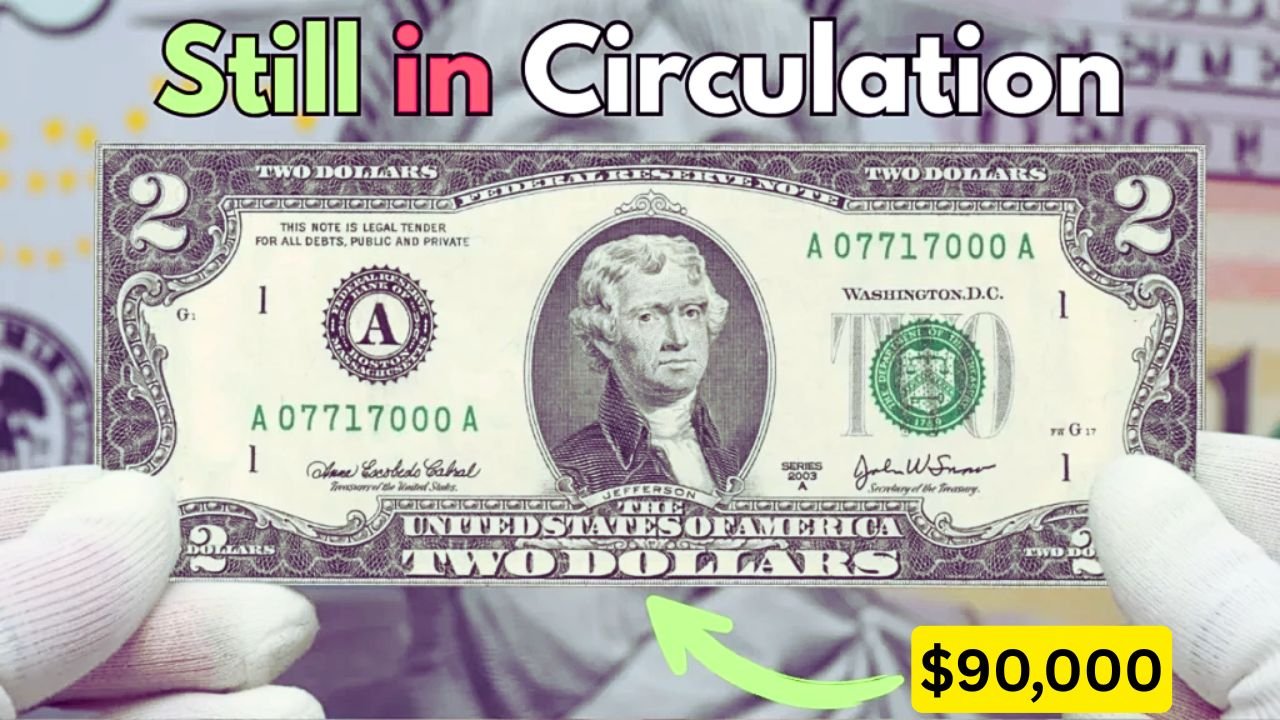A Hidden Gem in Your Pocket
A $2 bill might not seem like much, but some are worth way more than their face value. A rare $2 note with a special “repeater” serial number recently sold for over $90,000 at an auction, and similar bills might still be out there. These bills, mostly from the 1976 or 2003 series, have a serial number that repeats a pattern, making them a prize for collectors. The U.S. Bureau of Engraving and Printing didn’t make many with this exact feature, so they’re hard to find. Next time you get a $2 bill, it’s worth a quick check.
Spotting the Repeater Serial
How do you know if your $2 bill is one of these valuable ones? The key is the serial number, that string of numbers and letters printed in green or red ink on the front. A repeater serial number has a pattern that repeats, like 12341234 or 56785678. The pattern must repeat exactly twice within the 8-digit number (not counting the letters). Most $2 bills with this feature come from the 1976 or 2003 series, so check the year too. Compare your bill to a regular one to see if the serial number follows this unique pattern.
| Feature | Normal $2 Bill | Rare $2 Bill |
|---|---|---|
| Serial Number | Random numbers | Repeats (e.g., 12341234) |
| Series Year | Any year | 1976 or 2003 |
Why It’s So Valuable
What makes a $2 bill worth $90,000? It’s all about how rare and unique it is. The Bureau of Engraving and Printing makes billions of bills, but only a tiny fraction have repeater serial numbers. These patterns happen by chance, and most are caught before leaving the mint. The ones that slip into circulation are like gold to collectors. A bill in perfect condition, with no creases or tears, can fetch the highest prices at auction. Even a used one might still bring in tens of thousands, depending on the market.
Where These Bills Are Popping Up
People are finding these rare $2 bills in everyday places. One was discovered in a cash register at a small grocery store in Georgia. Another showed up in a tip jar at a coffee shop in Seattle. Since $2 bills are still legal to spend, they often go unnoticed. Collectors say they’ve seen them in change from vending machines or at flea markets. If you work with cash, like at a store or restaurant, you might have a better chance of spotting one. Keep an eye out, especially for 1976 or 2003 bills.
| Reported Finds | Location | Year Found |
|---|---|---|
| Grocery Store | Atlanta, GA | 2024 |
| Coffee Shop | Seattle, WA | 2025 |
What to Do If You Find One
If you think you’ve got a repeater $2 bill, don’t spend it. Take it to a trusted coin or currency dealer to verify it. They’ll check the serial number and the bill’s condition. You can also reach out to auction houses or currency experts for an appraisal. Store the bill in a protective sleeve to keep it in good shape, as damage can lower its value. If it’s the real deal, you could sell it to a collector or at an auction for a big payout. It’s a small effort for a potential fortune.
Look Closely at Your Cash
This rare $2 bill is a reminder that everyday money can hold big surprises. Whether you’re buying a snack or tipping a server, that $2 bill in your wallet might be worth thousands. Collectors are always searching for these repeater serials, and their value keeps growing as fewer stay in circulation. Next time you get a $2 bill, check the serial number and year. You could be holding a ticket to $90,000 or more.
